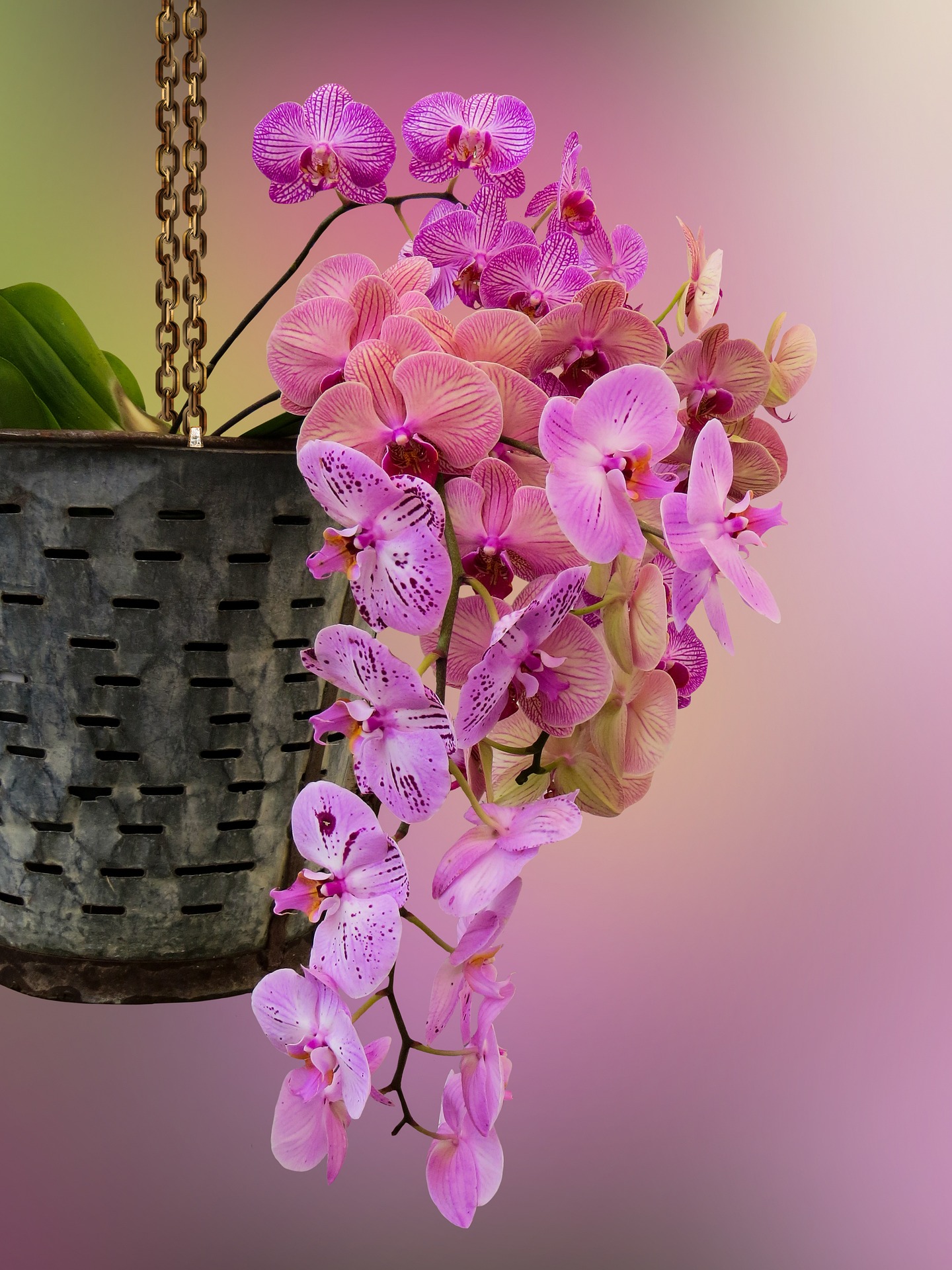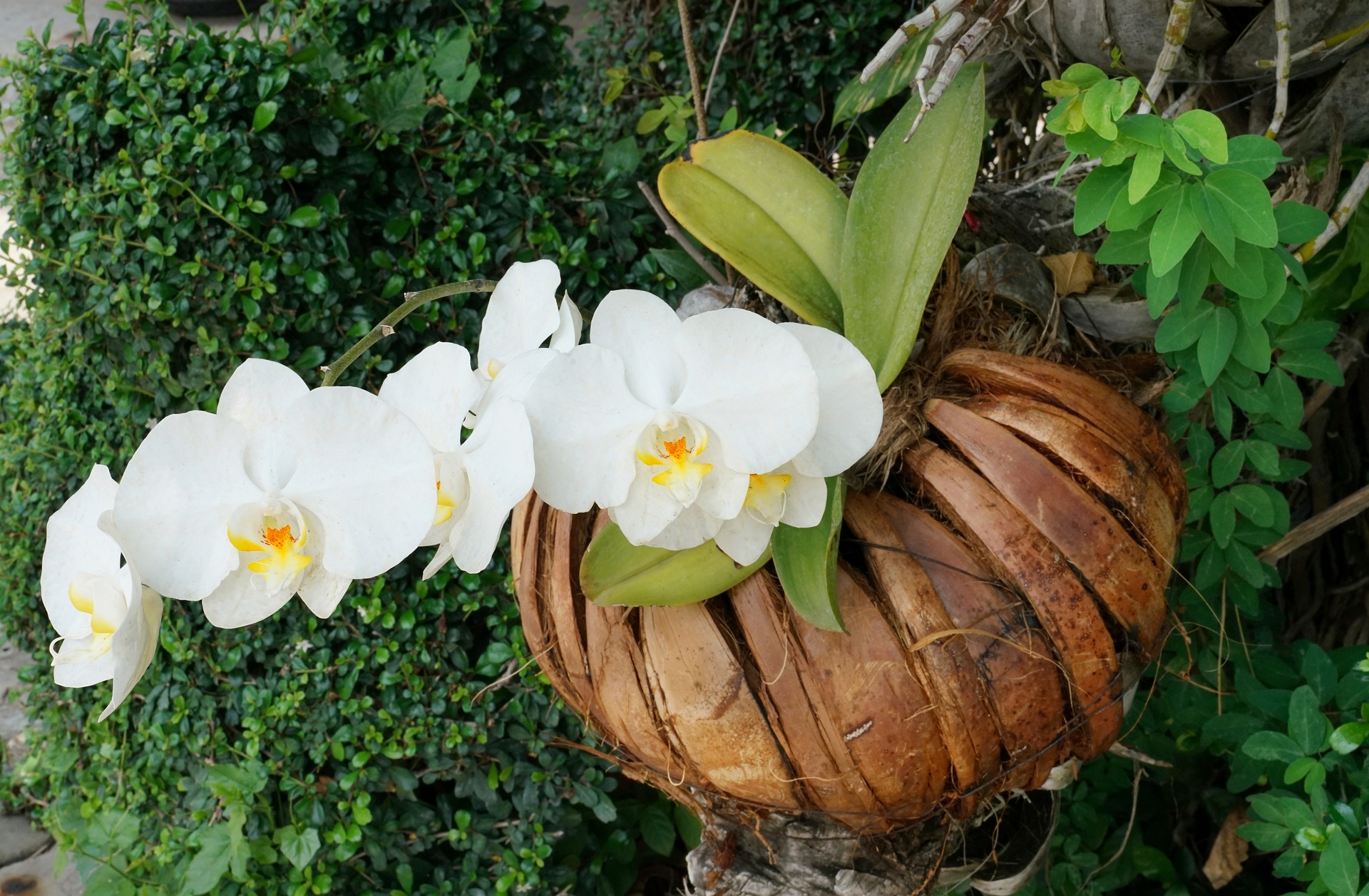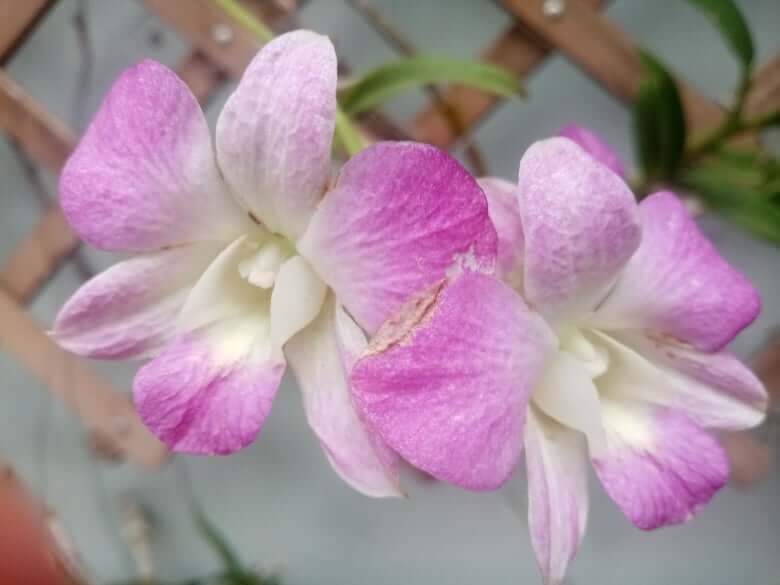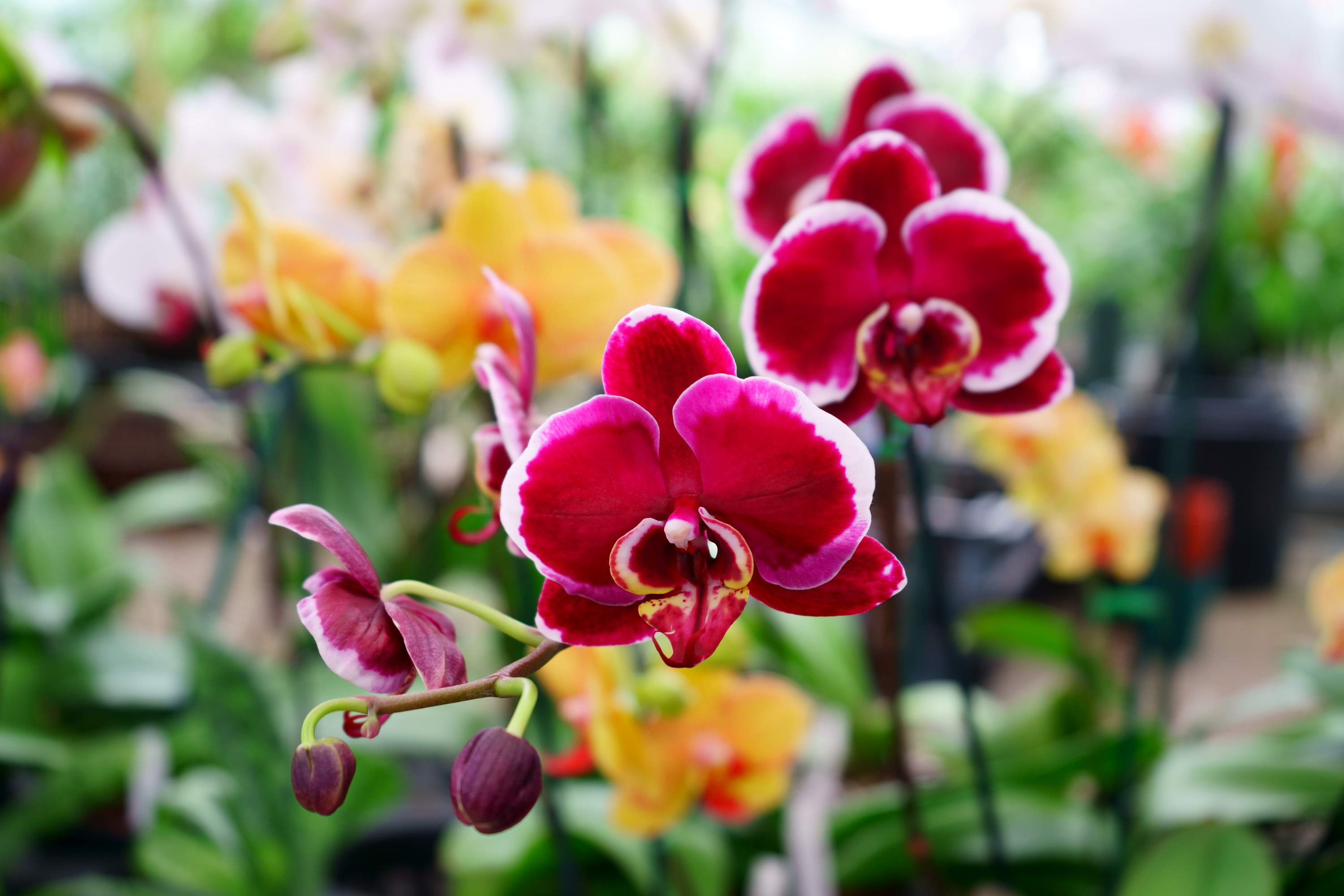Blooming Orchid Position
When it comes to choosing the placement of your blooming orchid position, there are a few important things to consider that require a balance between the optimum location and where you want to see and display your orchid. Orchids require specific conditions in order to thrive, and getting the placement, position and conditions just right can be the difference between a healthy, vibrant orchid with extravagant cascading blooms and one that struggles to bloom or not at all.
Light
One of the most important factors to consider is the amount of light your orchid receives. Most orchids love lots of light, although some more so than others, but too much direct sunlight can actually be harmful to all orchids. Some orchids for example, the very popular Phalaenopsis or Moth Orchid can thrive and bloom in low light conditions without the need for bright light. There are many types and species of orchids but in general, orchids prefer bright, indirect light, so placing them near a window that gets a lot of sunlight but also has a sheer curtain to filter out some of the intensity or has some shade from an outdoor bush or tree can be a good option. Another idea is to place the orchid near some supplemental light. Led lights and fluorescent lights work well, even an incandescent bulb can make a difference for orchids that thrive in low light conditions.
Temperature and Humidity
Other factors that are important are the temperature and humidity of the room where your orchid is blooming. Most orchids in cultivation are native to tropical and sub-tropical regions and they tend to thrive in warm, humid environments. If you happen to live in a drier climate, placing a humidifier in your orchid growing room contributes to a better environment for you and your orchid. In lieu of that it is advisable to mist your orchid's roots and leaves on a regular basis. Another solution is to place a glass or vase of water in the room with your orchid.
 Photo Credit: Garten-gg
Photo Credit: Garten-ggPositioning and Placement
When it comes to the placement of your blooming orchid, there are a few different options to consider. One idea is to simply place an orchid on a windowsill or other elevated surface such as a small table where it can receive plenty of light and be easily admired. This can be a great option for smaller orchids that don't take up too much space.
Another idea for your blooming orchid position is to hang orchids in a basket or a decorative ceramic pot. This not only allows the orchid to receive plenty of light from multiple angles, but it also adds a touch of elegance and beauty to a room. Whether you hang your orchid from a ceiling hook or place it on a stand, make sure to choose a spot that's sturdy and able to support the weight of the plant.
Other blooming orchid position ideas
If you have a larger orchid or multiple orchids that you want to display together, placing them on a plant stand can be a great way to showcase them. There are many different choices of plant stands available, from simple metal frames to elaborate wooden designs. Just make sure to choose a stand that's large enough to accommodate your orchids and that provides enough stability to prevent them from tipping over.
One other option to consider when it comes to the placement of your blooming orchid position is to include them in a larger display. For example, you could place a few orchids on a shelf alongside other houseplants, or incorporate them into a floral arrangement with other blooming flowers. This can be a great way to add some color and texture to your home décor and create a cohesive look.
In addition to thinking about the placement and position of your blooming orchids, there are a few other things to keep in mind when caring for these plants. First and foremost, make sure to water your orchids regularly, but be careful not to overwater them. Orchids need moisture to survive, but it is important to let the growing medium dry out between waterings, it's important to strike the right balance.
Another important thing to consider is fertilization. Orchids require specific nutrients during flowering, and a good orchid fertilizer can help provide them with the necessary elements. Look for a specialized orchid fertilizer that's designed to provide the right balance of nitrogen, phosphorus, and potassium during the flowering bloom stage. Just remember that it is better to under fertilize than over fertilize.

Pests and Disease Control
Finally, make sure to keep an eye out for any signs of pests or disease. Orchids can be attacked by certain pests, such as spider mites, thrips and mealybugs, so it's important to keep an eye on your plants regularly and to take action if you notice any unusual symptoms. Additionally, orchids can be susceptible to bacterial and fungal diseases, so make sure to keep them in a warm, well-ventilated area and avoid overwatering them. Avoid allowing water to pool where the stem and leaves meet as this is often an area where trouble can start. Orchids in the wild tend to grow sideways and slightly downward to avoid this from happening.
The placement of your blooming orchid position is an important aspect of caring for these beautiful plants. Whether you choose to place them on a windowsill, hang them in a basket, or incorporate them into a larger display, make sure to provide them with the right amount of light, temperature, and humidity, and keep an eye out for any signs of pests or disease. With the proper care and attention, your orchids can thrive with beautiful cascading colorful blooms and add beauty to your home for many years to come.


